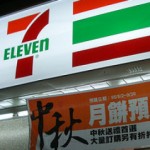Market Sizing in China: How to Size Your Consumer Demand?
 Why market sizing in China is necessary for your company
Why market sizing in China is necessary for your company
When creating your company or entering a new market, assessing the targeted market potential is crucial to define your strategic plans. Knowing your market sizing in China allows to answer to questions such as:
- Is the market we target big enough to interest us?
- Does the market move in the right direction?
- Is it moving fast enough?
- Is the market profitable enough?
Internally, determining market potential will help you to make different strategic decisions about product development, partnering and distribution, organizational design, and critical employee skills. It contributes to determine levels of investments in your business and profitable growth targets. For startups, knowing the size of the market also helps for tactical issues such as choosing an accountant or legal representation or selecting a bank. Externally, market size will be a determinant factor when searching for financing.
Daxue Consulting performs market sizing as part of strategy-oriented projects. “Market sizing is a technical and long process that involves three to four members of our research team and takes two months on average,” explains Clément Mougenot, Research Director at Daxue Consulting. “Business managers can find reports about the market they target on the internet, but reports may not be up-to-date, and sources may not be accurate or reliable. We aim to provide our clients with personalized and precise market sizing.”
How Daxue’s team determines a market size in China
To size your consumer demand in China, Daxue’s team uses a methodology that consists in cross-analyzing three estimations of the market size, which refers to three different market size approaches:
- Estimate supply on the market
Our research team collects prices of the product or service concerned in the Chinese market, and study the financial reports of the competitors. Using data on revenues generated by the sale of the product or service, we can estimate the quantity sold in the market you target in China and have a first evaluation of the market size.
- Assess demand for your product or service
Daxue’s team uses data and statistics (on demography for example) gathered through desk research to estimate the number of potential users of your product or service in China.
- Study distribution on the market
This approach includes distribution offline and online. Regarding online distribution, our researchers study analytics data of Chinese e-commerce platforms such as Tmall.com and JD.com, which occupy together 80% of the e-commerce market in China. Approaching offline distribution requires interviewing top managers and sales managers of major players on the market concerned. “We realize a significant number of these interviews to get first-hand information from professionals, such as their best-selling product(s), prices, and sales statistics,” explains Mougenot.
Daxue’s team uses various research methods to size your consumer demand:
– Desk research is widely performed to gather data about the market in China, competitors, and Chinese consumers
– Mystery calls are realized to study distribution on the market and get insights from sellers in China, mainly for projects for clients in B2B
– Store-checks allows us to be in contact with the market reality while keeping in mind that some companies don’t implement the same strategy (different pricing, different brands or products sold) in first-tier, second-tier, and third-tier cities in China
– In-depth interviews with market professionals, lasting 30 to 45 minutes
With information gathered using these research methods, we get three market size estimates from the different approaches previously mentioned. We combine these estimations to get the tightest range possible, which is the best market size provided to our client.
How Daxue Consulting uses market sizing in China to analyze your target market
Carrying out a range as an estimate of the market size is a first step in defining our client’s strategy. Our team then analyzes and segments the market that has been sized to find out which segment our client should target. “To provide complete and tailored recommendations to our customers, we present them a detailed description and an estimated size of the segment we advise them to target, along with data about its potential,” concludes Mougenot.















